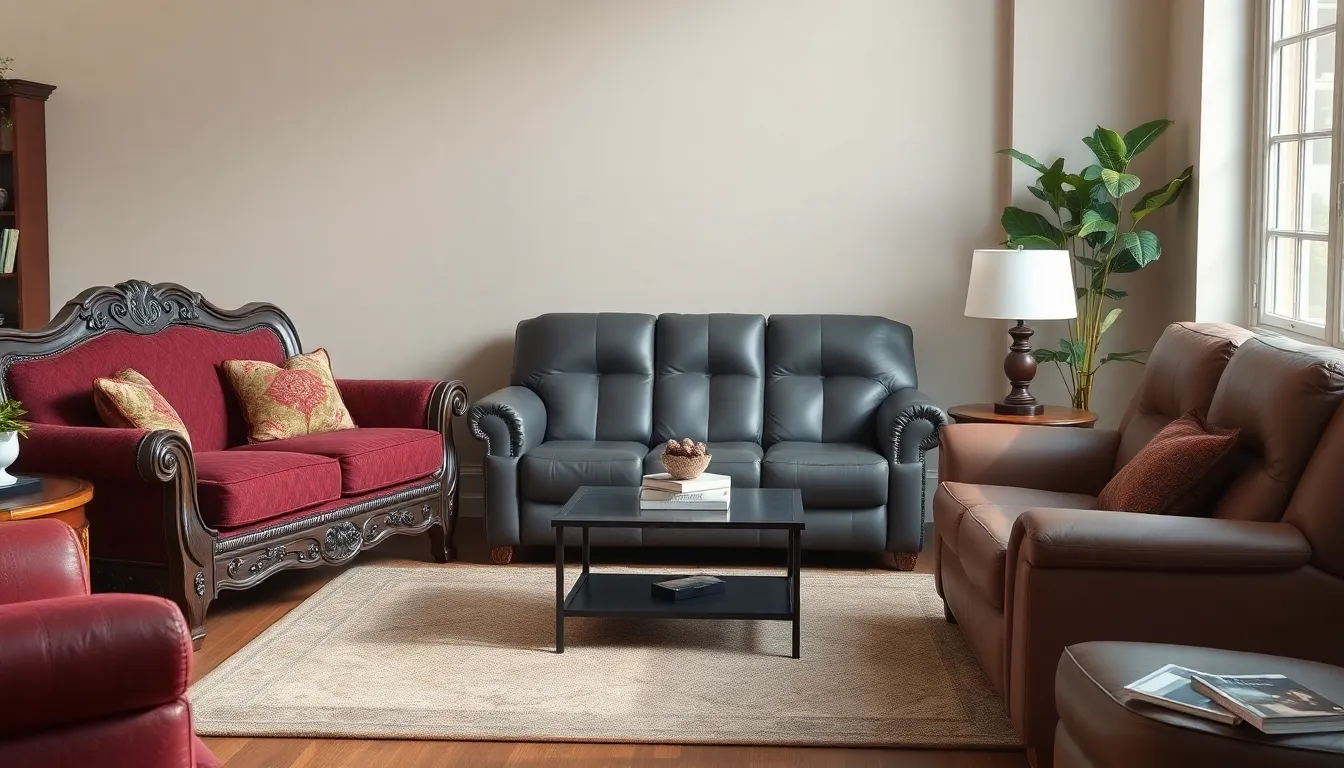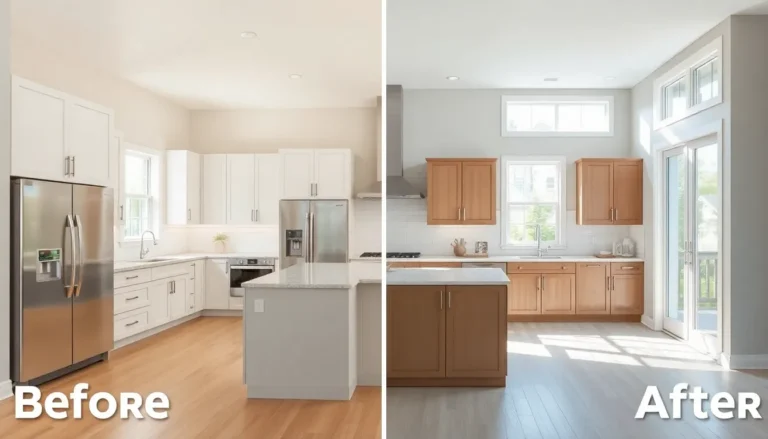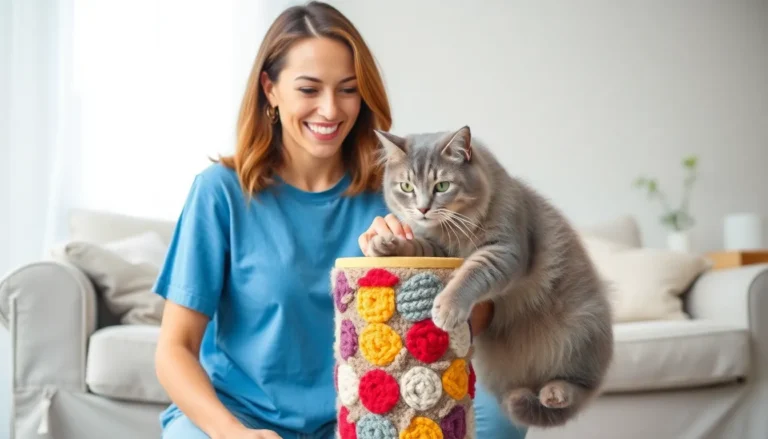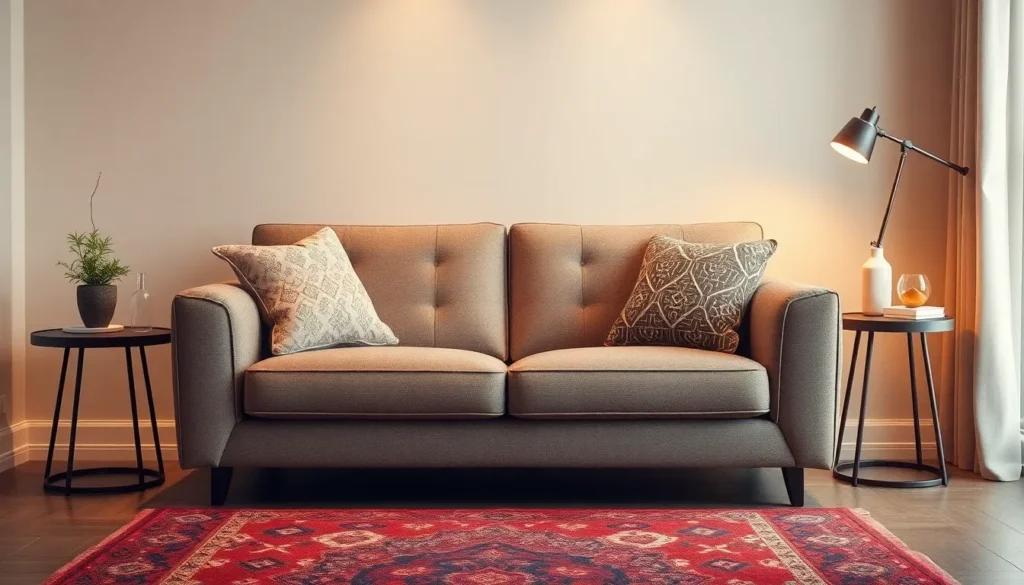Table of Contents
ToggleThe loveseat, a charming piece of furniture, has been a staple in homes for centuries. Its compact design and intimate seating make it the perfect addition to cozy living spaces. Whether nestled in a corner or the centerpiece of a room, loveseats offer both style and comfort, inviting couples and friends to share moments together.
Originally designed for two, loveseats have evolved in style and function, catering to diverse tastes and decor. From classic upholstery to modern minimalist designs, they enhance the aesthetic of any space while providing a snug spot for relaxation. As more people seek to create inviting atmospheres in their homes, the loveseat remains a popular choice, blending practicality with elegance.
Overview of Loveseats
Loveseats offer intimate seating for two, ideal for small spaces or cozy corners. Their compact design provides versatility in various room layouts. Loveseats feature diverse styles, including traditional, contemporary, and eclectic, catering to different aesthetic preferences.
Materials used in loveseats range from upholstered fabrics to leather, allowing for customization based on user requirements. Common dimensions for loveseats typically measure around 48 to 70 inches in width, making them suitable for apartments or limited areas.
Loveseats serve multiple functions beyond seating, often used as decorative accents in living rooms or nurseries. They complement larger seating arrangements by adding comfort and style. Placement options include against walls, in corners, or as part of a larger seating arrangement, enhancing overall room design.
Additionally, loveseats come in various colors and patterns, appealing to different styles. Popular choices include neutral shades, bold hues, and intricate prints, which can unify a room’s decor. Loveseats often incorporate features like reclining mechanisms or built-in storage, enhancing functionality.
The combination of aesthetics, comfort, and functionality makes loveseats a staple in home furnishings. Their enduring popularity stems from their ability to create inviting atmospheres while maximizing available space.
Types of Loveseats

Loveseats come in diverse styles, each offering unique features for various home designs. Below are the common types of loveseats available on the market.
Traditional Loveseats
Traditional loveseats showcase classic designs characterized by ornate carvings and rich upholstery. They often feature curved arms, plush cushions, and elegant detailing. Materials typically include wood, with finishes ranging from mahogany to cherry. Colors often lean towards muted, sophisticated tones, like burgundy or deep blue, enhancing a timeless aesthetic. Examples include Victorian and Edwardian styles, which usually incorporate intricate patterns and vintage fabrics.
Modern Loveseats
Modern loveseats emphasize simplicity and minimalism, showcasing clean lines and functional designs. They often incorporate materials like leather and textiles in neutral or bold colors to suit contemporary spaces. Sofas often feature geometric shapes and low profiles, making them suitable for modern apartments. Popular styles include Scandinavian, mid-century, and industrial designs, which focus on functionality without sacrificing style.
Reclining Loveseats
Reclining loveseats offer additional comfort with built-in reclining features. These loveseats typically include mechanisms that allow users to adjust seating positions, often accompanied by padded headrests and footrests. Upholstery comes in various materials, such as faux leather or soft fabric, providing both durability and style. Popular among those seeking relaxation, reclining loveseats are perfect for home theaters, dens, or any cozy setting. Examples of reclining mechanisms include manual lever options or electric button systems, catering to varying preferences.
Materials Used in Loveseats
Loveseats incorporate various materials for both their upholstery and structural components. Understanding these materials aids in selecting the right loveseat for specific needs and aesthetics.
Upholstery Options
Loveseat upholstery comes in several materials, each offering distinct textures and appearances:
- Fabric: Widely used for its variety of textures and colors, fabric upholstery includes options like cotton, linen, and polyester blends. Fabric choices often enhance comfort and style.
- Leather: Durable and luxurious, leather upholstery provides a sophisticated look and easy cleaning. It’s available in full-grain and bonded varieties, catering to different budgets.
- Microfiber: Known for its soft feel and resistance to stains, microfiber is an affordable alternative to leather and fabric, suitable for families with pets or children.
- Velvet: Soft and plush, velvet upholstery adds a touch of elegance and richness to loveseats. It works well in formal settings and modern designs.
Frame Construction
Loveseats rely on strong frame construction to ensure longevity and support. Common materials include:
- Hardwood: Frames made from hardwood, like oak or maple, provide durability and stability over time. They resist warping and support heavier weights.
- Plywood: Plywood frames, often reinforced with additional layers, offer a cost-effective solution. This material is lightweight yet sturdy, suitable for many designs.
- Metal: Metal frames, usually found in modern styles, provide a sleek look and excellent strength. They ensure a minimalist aesthetic while maintaining functionality.
- Engineered Wood: Comprising layers of wood products, engineered wood frames are stable and cost-efficient. They’re a common option in budget-friendly loveseats.
These materials play crucial roles in both comfort and durability, influencing the overall look and feel of loveseats in home decor.
Choosing the Right Loveseat
Selecting the right loveseat involves careful consideration of size and style. A well-chosen loveseat enhances both functionality and aesthetics in any space.
Size Considerations
Size plays a crucial role in choosing a loveseat. Assess available space to ensure a proper fit. Common dimensions for loveseats range from 48 to 70 inches in width. Measure the area where the loveseat will reside, factoring in surrounding furniture. Ensure that pathways are clear for movement. For smaller rooms, opt for loveseats with slim profiles or compact designs. This choice maximizes seating while minimizing clutter. Additionally, consider the height and depth of the loveseat, ensuring it offers comfort without overwhelming the room.
Style Integration
Style integration involves aligning the loveseat with existing home decor. Identify the current aesthetic—whether traditional, contemporary, or eclectic. Traditional loveseats often feature ornate details and rich fabrics, enhancing classic decor. Modern options, with their clean lines and minimalistic designs, fit well in contemporary settings. Eclectic styles offer unique patterns and textures, allowing for creative expression. Select a color scheme that complements other furnishings while adding visual interest. Upholstery choices, such as leather, microfiber, or velvet, contribute to tactile appeal. Ultimately, the chosen loveseat should harmonize with the overall decor, creating a cohesive atmosphere in the living space.
Care and Maintenance
Maintaining a loveseat ensures its durability and aesthetic appeal. Regular cleaning and proper care extend the life of this cherished furniture piece.
Routine Cleaning
- Dusting: Dust the loveseat with a soft cloth weekly to prevent buildup. Focus on seams and crevices to catch any hidden debris.
- Vacuuming: Vacuum the upholstery monthly using an attachment designed for furniture. This process removes dirt and pet hair without damaging the fabric.
Stain Removal
- Immediate Action: Address spills promptly. Blot the area with a clean, dry cloth to absorb excess moisture before applying a cleaner.
- Cleaning Solutions: Use a fabric-safe cleaner or a mixture of mild soap and water for spot cleaning. Always test the solution on a hidden area first to ensure it doesn’t harm the color or texture.
Upholstery Care
- Fabric Types: Different fabrics require specific care. For example, leather needs conditioning to prevent cracking, while microfiber resists stains but may need more thorough cleaning methods.
- Rotation of Cushions: Regularly rotate and flip cushions, if possible, to promote even wear and maintain shape.
Frame Maintenance
- Checking Stability: Periodically inspect the frame for creaks or instability. Tighten any loose screws and check joints for wear.
- Avoiding Overloading: Limit the weight on the loveseat to avoid damage. Most loveseats accommodate two to three people comfortably based on their construction.
Protecting from Sunlight
- Location Considerations: Position the loveseat away from direct sunlight to prevent fading. Consider using window treatments to minimize exposure.
Seasonal Care
- Humidity Control: In humid environments, use a dehumidifier to prevent mold growth, especially in fabric upholstery.
- Storage Options: For outdoor loveseats, consider using weatherproof covers during off-seasons to protect from the elements.
By following these care and maintenance practices, individuals can preserve the beauty and comfort of their loveseats throughout the years.
The loveseat’s charm lies in its ability to blend comfort and style seamlessly. Its versatility makes it a perfect fit for any room while accommodating diverse tastes and preferences. Whether it’s a traditional piece with intricate detailing or a sleek modern design, the loveseat enhances any living space.
Maintaining its aesthetic appeal through proper care ensures this beloved furniture piece remains a staple in homes for years. With a range of materials and colors available, finding the right loveseat that complements existing decor is easier than ever. Ultimately, the loveseat stands as a testament to timeless design, providing a cozy spot for relaxation and connection.





